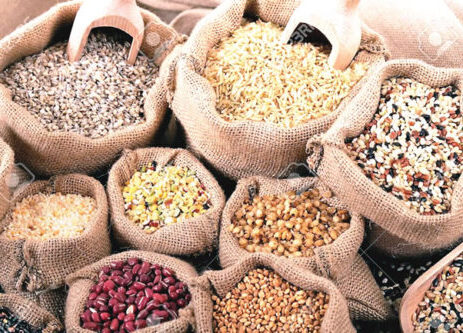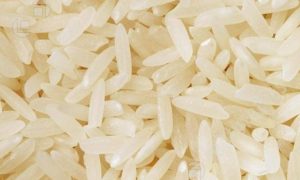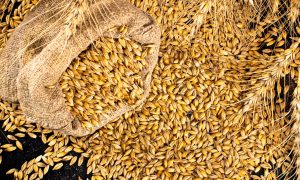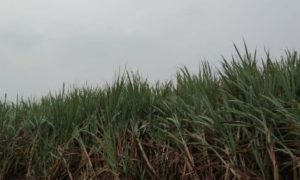Canada’s Crop Revolution: Why Wheat and Pulses Are the New Gold in Global Agriculture

Canada’s farmers are shifting from canola and barley to wheat and pulses due to trade tensions, poor soil moisture, and rising global demand. Wheat acreage rose 1%, lentils and dry peas surged 4% and 9%, while canola and barley fell. Investors are advised to favor wheat and pulse-focused agribusinesses or ETFs and avoid canola-heavy exposure amid uncertain China relations.
The Canadian agricultural sector is undergoing a seismic shift. After years of dominance by canola and barley, farmers are now prioritizing wheat and pulses like lentils and dry peas. This strategic pivot, driven by trade tensions, soil moisture concerns, and evolving global demand, is reshaping export-driven profitability. For investors, this presents a clear roadmap: favor wheat and pulse-based agribusinesses or ETFs while treading cautiously around canola exposure.
The data is clear: Canadian farmers are planting more wheat and pulses, less canola and barley. In 2025, wheat acreage rose by 1% to 26.9 million acres, with durum wheat (a high-value export crop) up 2.6%. Pulses, including lentils and dry peas, surged by 4% and 9%, respectively, fueled by strong international demand. Meanwhile, canola acreage fell by 2.5%, and barley dropped 4.2% (see Table 1 below).
Table 1: Crop Acreage Trends (2024–2025)
| Crop | 2023–2024 (Million Acres) | 2024–2025 (Million Acres) | Change % |
|---|---|---|---|
| Wheat | 26.6 | 26.9 | +1.0 |
| Canola | 22.1 | 21.5 | -2.5 |
| Pulses | 4.2 | 4.4 | +4.0 |
| Barley | 6.4 | 6.1 | -4.2 |
Trade Tensions with China: The single largest factor altering Canada’s crop mix is China’s 100% tariffs on canola oil and peas, imposed in March 2025. These punitive measures slashed Canadian canola exports to China from 1.5 million tonnes in 2023–24 to just 0.4 million tonnes this year. With no resolution in sight, farmers are reducing canola plantings to avoid overexposure to this risk.
Soil Moisture Challenges: Western Canada’s warm, dry spring accelerated seeding but raised concerns about moisture levels for canola and barley, which require consistent irrigation. Eastern Canada, meanwhile, faced delays due to cool, wet conditions, further tilting the balance toward drought-resistant crops like wheat and lentils.
Global Demand for Pulses: Pulses are benefiting from a perfect storm of factors. Lentils and dry peas are critical protein sources in regions like India and the Middle East, where demand is soaring. Canadian production has surged to meet this need: lentil exports hit 5 million tonnes in 2024–25, with global competitors like Turkey and Europe still struggling to match supply.
1. Wheat: A Steady Anchor in Volatile Markets
Wheat prices have dipped slightly due to global oversupply (2024–25 global stockpiles rose to 1,067 million tonnes), but Canadian farmers are positioned to capitalize on quality premiums. Durum wheat (used in pasta) and spring wheat (for bread) command higher prices than bulk grains.
Investors should look to ETFs like the Teucrium Wheat Fund (NW) or the Invesco DB Agriculture Fund (DBA), which track commodity prices. For direct exposure, consider Canadian grain handlers like Viterra or Cargill, which benefit from wheat’s logistical dominance.
2. Pulses: The High-Growth Frontier
Pulses are the star performers. Lentil prices have held steady at $1,600/tonne despite rising global supply, thanks to inelastic demand from protein-starved markets. Dry peas, now 20% more profitable than canola in Alberta, offer further upside.
Agribusinesses with strong pulse supply chains—such as Lentils Canada or Pulse Canada—are prime targets. ETFs like the Global X Agricultural Development ETF (AGRI), which includes seed companies and farm equipment firms, also warrant attention.
3. Canola: Proceed with Caution
Canola’s decline is a cautionary tale. While acreage has fallen, prices remain depressed: the 2024–25 average price of $315/tonne is the lowest in three years. With China’s tariffs lingering and no major new markets emerging, investors should avoid canola-heavy ETFs like the Horizons Canadian Agribusiness ETF (HAGC) unless there’s a geopolitical breakthrough.
Canada’s farmers are voting with their planters: wheat and pulses are the crops of choice. For investors, this means allocating capital to businesses and ETFs that benefit from these trends. Wheat’s stability and pulses’ growth potential offer a dual hedge against market volatility. Meanwhile, canola’s reliance on a single, hostile market makes it a high-risk bet.
The key watch points? Trade negotiations with China (a tariff rollback could briefly boost canola prices) and global weather patterns (droughts in major wheat regions like Australia or Ukraine could tighten supplies). Stay nimble, but stay long on the new gold: wheat and pulses.
To Read more about Wheat News continue reading Agriinsite.com
Source : Ukr Agro Consult

















